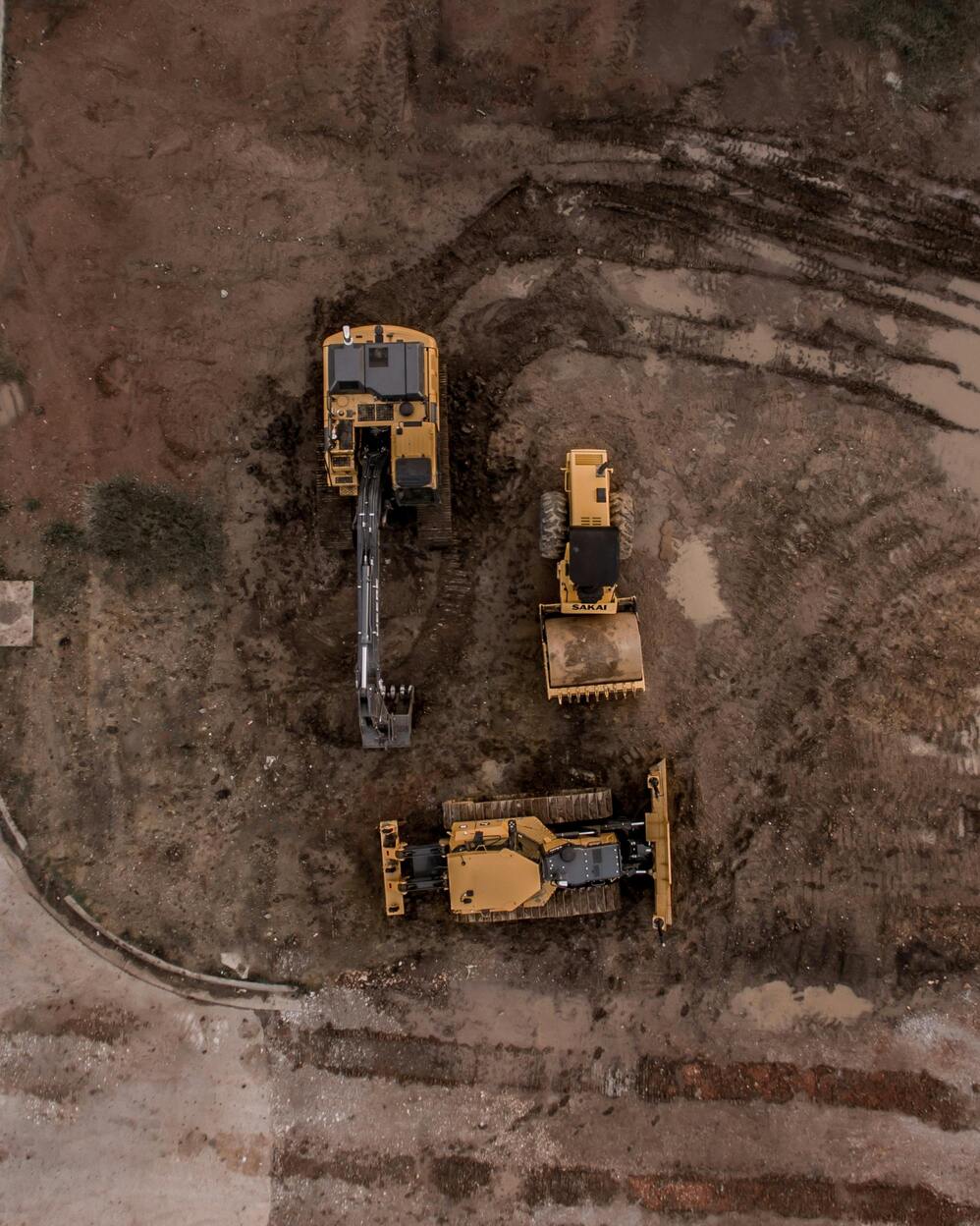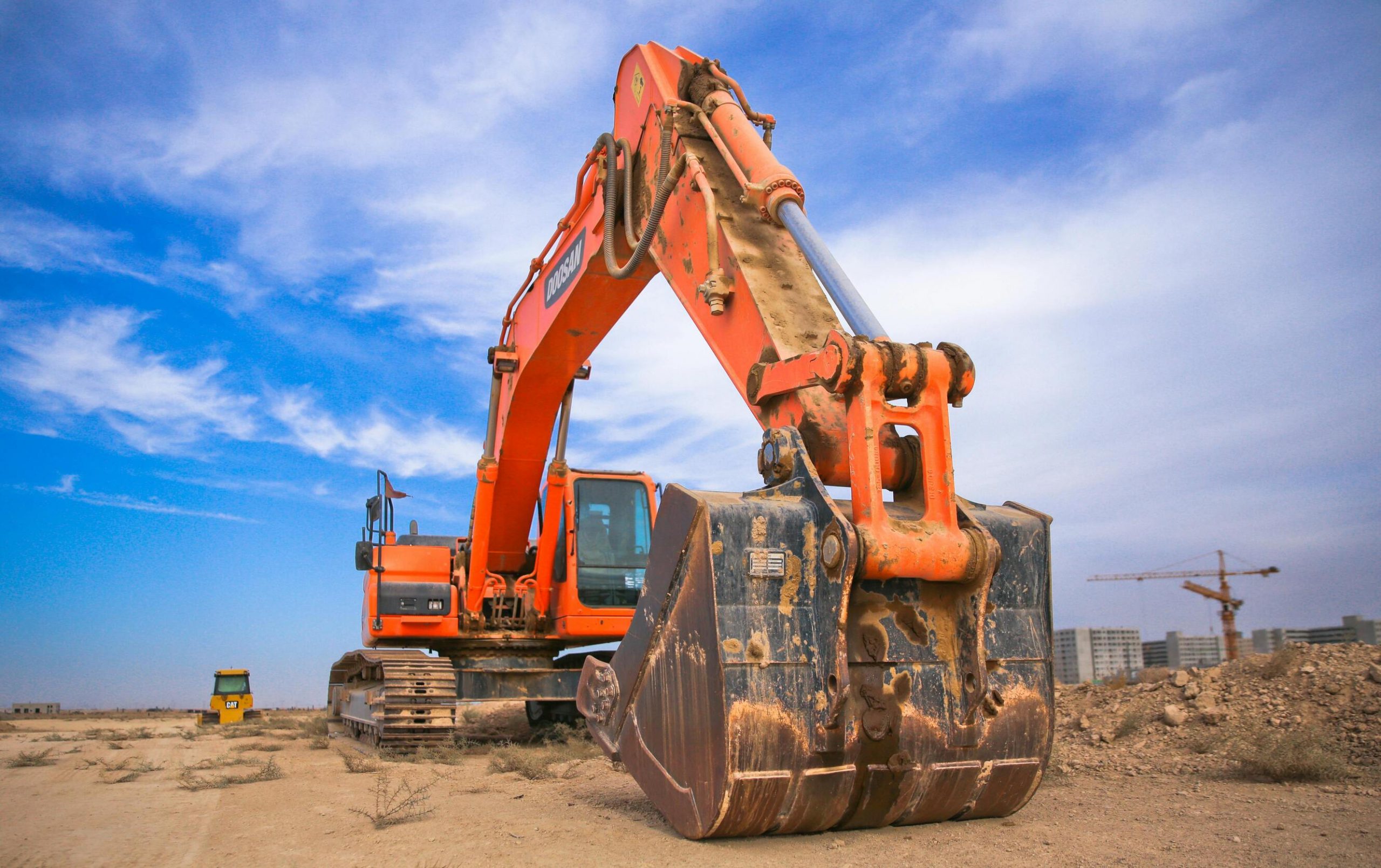Mining and earthmoving operations entail inherent risks that can lead to substantial financial losses.
To mitigate potential liabilities, having appropriate insurance coverage is essential.
This article will delve into the different types of insurance necessary for mining and earthmoving, such as workers’ compensation, general liability, property, commercial auto, professional liability, and environmental liability insurance.
It will also cover selecting the right insurance provider and the procedures to follow in the event of an insurance claim.
Stay informed and protect your business with the correct insurance coverage.
Why is Insurance Important for Mining and Earthmoving?
Insurance is essential in the mining and earthmoving industry because of the risks involved in these operations. It provides protection against liability, property damage, accidents, and other potential issues. Compliance with regulations and risk mitigation are also important factors that make insurance crucial in this industry.
Having the right insurance coverage not only helps businesses avoid financial losses but also assists in dealing with unexpected events that can disrupt operations. In the mining and earthmoving sector, where heavy machinery and hazardous conditions are common, insurance serves as a safety net for equipment breakdowns, environmental liabilities, and employee injuries. By ensuring adequate insurance coverage, companies can meet industry standards and be prepared financially to handle emergencies effectively. The peace of mind that insurance offers policyholders is invaluable, allowing them to focus on their core activities without constant concerns about potential risks.
What are the Risks Involved in Mining and Earthmoving?
Mining and earthmoving activities present various risks, such as accidents, property damage, and exposure to hazardous materials. Failure to comply with safety regulations can result in legal and financial consequences. The use of heavy machinery in these operations heightens the chances of incidents and machinery malfunctions. Improper handling of explosives and storage of materials can lead to explosions and fires, endangering worker safety and causing significant property damage.
These activities can also disrupt ecosystems, resulting in environmental degradation and soil erosion. Insufficient safety measures increase the risk of spills or leaks, which can pollute water sources and harm wildlife. Implementing comprehensive risk management strategies and following safety protocols are crucial to protecting both personnel and the environment, ensuring adherence to regulatory standards, and reducing potential liabilities.

What Types of Insurance are Required for Mining and Earthmoving?
Different types of insurance are necessary for mining and earthmoving operations to guarantee comprehensive coverage and protection. These include workers’ compensation insurance, general liability insurance, property insurance, commercial auto insurance, and specialized coverage options tailored to the industry’s unique needs.
Workers’ compensation insurance is especially essential in these industries as it offers coverage for medical expenses and lost wages for employees who are injured on the job. General liability insurance protects against third-party claims of bodily injury or property damage. Property insurance safeguards physical assets like equipment, buildings, and inventory from risks such as theft, vandalism, or natural disasters. Commercial auto insurance covers vehicles used in the business for accidents and damage.
Exploring coverage options that consider the specific risks and challenges faced in mining and earthmoving is crucial to ensure adequate protection.
1. Workers’ Compensation Insurance
Workers’ compensation insurance is essential for mining and earthmoving companies to safeguard their employees in case of work-related injuries or illnesses. This insurance covers medical expenses, lost wages, and disability benefits, ensuring that workers are financially protected following an incident.
This type of insurance typically includes coverage for immediate medical costs, as well as rehabilitation and ongoing care. The claims process usually involves promptly reporting an injury to the employer and the insurance carrier, followed by an investigation to verify the claim’s validity.
Occupational safety is crucial in preventing accidents and injuries in these high-risk industries, emphasizing the importance of strict safety protocols and employee training. By following workers’ compensation regulations, companies demonstrate their dedication to providing a safe work environment and supporting their workforce during challenging times.
2. General Liability Insurance
General liability insurance is crucial for mining and earthmoving companies as it offers protection against third-party claims involving bodily injury, property damage, or personal injury. This insurance covers legal defense expenses, settlements, and damages, providing a financial safety net for businesses facing liability claims.
This type of insurance is vital for shielding companies from potential lawsuits and financial strains resulting from accidents or incidents at job sites. Insufficient coverage could leave a business vulnerable to significant financial losses from just one claim, potentially jeopardizing the company’s future.
By selecting the appropriate general liability insurance with suitable coverage limits, companies in this sector can ensure they are adequately safeguarded against unforeseen circumstances. Solid insurance coverage also helps these businesses uphold a positive reputation within the industry and protect their assets when faced with legal disputes.
3. Property Insurance
Property insurance is essential for mining and earthmoving companies to safeguard their physical assets, such as equipment, machinery, and facilities, from damage or loss. It offers protection for property damage caused by events like fires, theft, vandalism, and natural disasters, ensuring the continuity of business operations and financial stability.
This form of insurance is critical for these industries due to their heavy reliance on costly equipment and infrastructure that face various risks. With property insurance in effect, companies can protect their investments and mitigate potentially severe financial losses in unforeseen circumstances. Property insurance can also cover business interruption, aiding companies in recovering lost income and maintaining smooth operations following a significant incident. It plays a crucial role in safeguarding the assets and sustainability of mining and earthmoving operations.
4. Commercial Auto Insurance
Commercial auto insurance is important for mining and earthmoving companies that utilize a fleet of vehicles for business activities. It offers coverage for vehicle damage, liability in the event of accidents, and protection for drivers and passengers, ensuring comprehensive insurance for the commercial vehicles employed in daily operations.
This type of insurance is crucial as companies in these industries encounter distinct risks due to the nature of their operations. Mining and earthmoving businesses frequently operate heavy machinery and large vehicles in challenging environments, which raises the likelihood of accidents or damage. Having appropriate coverage can protect against potential financial losses stemming from incidents like collisions, theft, or vandalism. Tailored insurance solutions can address specific risks such as equipment breakdowns, environmental damage, and third-party injuries, providing a safety net that extends beyond standard policies.
5. Professional Liability Insurance
Professional liability insurance, also referred to as errors and omissions insurance, is important for mining and earthmoving professionals who offer consulting or expertise services. It provides protection against claims of negligence, errors, or omissions in the services provided, offering coverage for legal defense costs and indemnity against potential liabilities.
This type of insurance is specifically crafted to protect individuals or firms in the mining and earthmoving industry from financial loss and the legal consequences that may result from professional errors. In an industry where work involves high-risk activities and specialized knowledge, having professional liability insurance is crucial for maintaining peace of mind and ensuring long-term success. By investing in this insurance, professionals can concentrate on delivering quality services without the constant concern of potential lawsuits or claims impacting their business or reputation.
6. Environmental Liability Insurance
Environmental liability insurance is important for mining and earthmoving companies to manage the financial risks related to environmental damage or pollution incidents. It covers cleanup costs, legal expenses, and potential liabilities stemming from environmental hazards, helping these companies comply with environmental regulations and safeguard against unexpected environmental risks.
This type of insurance serves as a safeguard for businesses involved in mining and earthmoving activities, protecting them from the significant financial repercussions that can arise from accidental spills, soil contamination, or other environmental incidents. By obtaining the right coverage, these companies can concentrate on their primary operations without the constant worry of facing substantial financial challenges due to environmental accidents.
Environmental liability insurance promotes responsible environmental practices among companies by encouraging proactive risk management and ensuring swift responses to potential environmental threats.
How to Choose the Right Insurance Provider for Mining and Earthmoving?
Choosing the appropriate insurance provider for mining and earthmoving operations is essential to secure optimal coverage and assistance. To make a well-informed decision, it is advisable to conduct research and compare various providers, assess their experience in the industry, review feedback, and take into account factors like cost and coverage options.
conduct research and compare various providers, assess their experience in the industry, review feedback, and take into account factors like cost and coverage options.
Thorough research allows for selecting an insurance provider that comprehends the unique risks linked with mining and earthmoving activities. Examining their industry track record helps in determining their proficiency in managing these specialized areas. Feedback from similar businesses operating in related sectors can offer valuable perspectives on the insurer’s service quality and responsiveness.
In terms of costs, it is crucial to note that the least expensive option might not always provide the most extensive coverage. Striking a balance between affordability and the necessary level of protection for operations is significant.
1. Research and Compare Providers
When selecting an insurance provider for a mining and earthmoving business, it is advisable to conduct thorough research and compare multiple options. It is recommended to look for providers with a solid reputation in the industry, excellent customer service, and a track record of meeting the unique insurance needs of mining and earthmoving operations.
When assessing insurance providers, it is important to consider their experience in covering risks specific to mining and earthmoving, such as equipment damage, liability claims, and environmental hazards. It is advisable to seek out companies that have a deep understanding of the challenges faced in these industries. Evaluating their financial stability and ability to handle large-scale claims effectively is also crucial.
Reviewing the policies offered by each provider is essential to ensure they align with the risks inherent in mining and earthmoving activities. This practice can help safeguard the business against unexpected contingencies.
2. Check for Industry Experience
When choosing an insurance provider for mining and earthmoving operations, it is advisable to prioritize companies with significant industry experience. An insurer that is well-versed in the specific risks and coverage requirements of the mining and earthmoving sector can provide customized solutions and expert advice.
These insurers possess a depth of knowledge that extends beyond standard coverage offerings. They have a keen understanding of the nuances of mining and earthmoving operations, enabling them to identify potential risks that may be overlooked by conventional insurance providers. Their capacity to conduct specialized risk assessments allows them to develop policies tailored to the unique machinery, equipment, and job sites involved, ensuring comprehensive coverage.
By partnering with an insurer familiar with the distinct challenges of the mining and earthmoving industry, individuals can have peace of mind knowing their business is adequately protected.
3. Read Reviews and Ask for Recommendations
To select an insurance provider for mining and earthmoving ventures, it is advisable to review feedback and ask for recommendations from industry peers or professional networks. Other businesses’ insights can help assess the quality of service, efficiency of the claims process, and overall satisfaction with the insurance provider.
These reviews and recommendations are essential for informing the decision-making process. By leveraging the experiences of industry peers, potential pitfalls can be avoided, and alignment can be made with insurers known for their reliability and customer satisfaction. Understanding how various insurers handle claims and interact with clients can lead to time and cost savings in the long term. Therefore, it is recommended to utilize this resource before finalizing a choice.
4. Consider Cost and Coverage Options
When selecting an insurance provider for mining and earthmoving activities, it is important to carefully assess the cost and coverage options available. This involves comparing premiums, considering the underwriting process, and evaluating the extent of coverage provided to ensure that the chosen insurance plan aligns with budget constraints and risk management requirements.
It is crucial to find a balance between the cost of insurance premiums and the level of coverage offered. Examining the details of the policy can help determine if it adequately protects equipment, personnel, and business operations. Understanding the coverage limits is vital to avoid potential gaps in protection. Additionally, evaluating the underwriting process can provide insights into the speed and efficiency of claims processing.
When reviewing insurance plans, it is recommended to prioritize those that provide comprehensive coverage tailored to the specific risks associated with mining and earthmoving activities.
What to Do in Case of an Insurance Claim for Mining and Earthmoving?
In the case of an insurance claim related to mining and earthmoving activities, it is important to take prompt and appropriate actions. Notifying the insurance provider, collecting evidence, thoroughly documenting the incident, and cooperating with the insurer’s investigation can help facilitate the claims process efficiently.
It is vital to inform your insurer promptly to initiate the claims process without delay.
When gathering evidence, it is advisable to gather photographs, videos, witness statements, and any other relevant documentation to support your claim.
Accurately documenting the details of the incident can assist in providing a clear account to the insurance company.
Having a good understanding of your policy coverage and obligations is essential during this process to avoid any potential misunderstandings.
Working together with your insurance company enables effective communication and ensures a smoother resolution of your claim.
1. Notify Your Insurance Provider
In an insurance claim scenario involving mining and earthmoving operations, the initial essential step is to promptly inform your insurance provider. Adhering to notification requirements facilitates the efficient initiation of the claims process and ensures the insurer is promptly notified of the incident.
This immediate notification is crucial as it enables the insurer to promptly evaluate the situation, conduct necessary investigations, and determine coverage eligibility. By following notification protocols, policyholders can also benefit from timely guidance and support from the insurer throughout the claims process.
Failure to promptly inform the insurance provider may result in claim processing delays, potential complications, or even a denial of coverage, emphasizing the significance of complying with the notification requirements outlined in the insurance policy.
2. Gather Evidence and Document the Incident
Accurate documentation and thorough evidence collection play a crucial role in preparing an insurance claim for mining and earthmoving incidents. It is important to gather relevant information, photographs, and reports that detail the incident to support the claim and provide the insurer with a clear understanding of the damages or losses incurred.
This comprehensive compilation of evidence not only helps expedite the claims process but also serves as a strong foundation for demonstrating the validity of the claim. Photographs taken from various angles can effectively illustrate the extent of the damage, while witness statements can offer important firsthand accounts that support the version of events.
Detailed incident reports that outline the sequence of events, actions taken, and any relevant details further enhance the credibility of the claim. By systematically documenting and organizing this evidence, the individual strengthens their position and improves the chances of a favorable outcome in the insurance claim.
3. Cooperate with the Insurance Company’s Investigation
It is important to cooperate with the insurance company’s investigation process to expedite the evaluation and resolution of your mining and earthmoving insurance claim. Providing accurate information, responding promptly to inquiries, and collaborating with the insurer can help facilitate a thorough assessment of the incident.
Working closely with the insurer during the investigation ensures that all necessary details are efficiently gathered, which can significantly impact the speed and accuracy of the claims process. Timely and accurate responses to inquiries are crucial in demonstrating cooperation and commitment to promptly resolving the claim. Active participation in the investigation not only speeds up the evaluation but also helps avoid potential delays or disputes in the claims settlement. Ultimately, a comprehensive evaluation ensures fair and timely compensation for the damages incurred.
4. Review and Understand Your Policy Coverage
It is essential to review and understand the coverage provided by your insurance policy before proceeding with an insurance claim in the context of mining and earthmoving operations. Familiarizing yourself with the policy terms, coverage limits, endorsements, and exclusions is crucial to ensure that your claim aligns with the scope of protection offered.
Understanding these aspects of your insurance policy can help prevent potential complications during the claim process. Knowing the specific conditions under which your policy provides coverage allows for better navigation of the requirements for filing a claim related to mining and earthmoving activities. This knowledge enables policyholders to make informed decisions and ensure they meet all obligations outlined in the policy, thereby increasing the chances of a successful and efficient claims process.…







 conduct research and compare various providers, assess their experience in the industry, review feedback, and take into account factors like cost and coverage options.
conduct research and compare various providers, assess their experience in the industry, review feedback, and take into account factors like cost and coverage options.